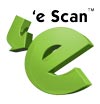From eScan Wiki
| Revision as of 14:45, 1 February 2016 Webmktg (Talk | contribs) ← Previous diff |
Revision as of 14:45, 1 February 2016 Webmktg (Talk | contribs) Next diff → |
||
| Line 17: | Line 17: | ||
| ::eScan Management Console monitors and logs the session activity of the managed computers. It will display a report of the endpoint startup/ shutdown/ logon/ log off/ remote session connects/ disconnects. With this report the administrator can trace the user Logon and Logoff activity along with remote sessions that took place on all managed computers. | ::eScan Management Console monitors and logs the session activity of the managed computers. It will display a report of the endpoint startup/ shutdown/ logon/ log off/ remote session connects/ disconnects. With this report the administrator can trace the user Logon and Logoff activity along with remote sessions that took place on all managed computers. | ||
| - | <b>• Active Directory synchronization</b> | + | <b>• Active Directory Synchronization</b> |
| ::With the help of Active Directory synchronization, the administrator can synchronize eScan Centralized Console groups with Active Directory containers. New computers and containers discovered in Active Directory are copied into eScan Centralized Console automatically and the notification of the same can be sent to the system administrator. Administrator can also choose to Auto Install or Protect discovered Windows workstations automatically. | ::With the help of Active Directory synchronization, the administrator can synchronize eScan Centralized Console groups with Active Directory containers. New computers and containers discovered in Active Directory are copied into eScan Centralized Console automatically and the notification of the same can be sent to the system administrator. Administrator can also choose to Auto Install or Protect discovered Windows workstations automatically. | ||
| Line 25: | Line 25: | ||
| ::Policy deployment can be made easy through policy templates; this will allow the administrator to create policy templates and deploy it to the desired managed groups. | ::Policy deployment can be made easy through policy templates; this will allow the administrator to create policy templates and deploy it to the desired managed groups. | ||
| - | <b>• Auto grouping</b> | + | <b>• Auto Grouping</b> |
| ::The administrator can define the settings to automatically add clients under desired sub groups. The administrator will have to Add Groups and also add client criteria under these groups based on host/host name with wild card/IP address/ IP range. | ::The administrator can define the settings to automatically add clients under desired sub groups. The administrator will have to Add Groups and also add client criteria under these groups based on host/host name with wild card/IP address/ IP range. | ||
Revision as of 14:45, 1 February 2016
New Features in eScan Corporate
eScan Corporate is a comprehensive anti-virus and information security solution that effectively provides Zero-Day Protection to both servers and endpoints. eScan Management Console (EMC) includes a Secure Web Interface that facilitates dynamic security management of the server and endpoints in the corporate network. It consists of a web based centralized Management Console that helps the administrator to install and manage eScan Corporate 360 Client on Windows, Linux, Mac machines and Android devices connected to the network.
What's new in the application?
• Outbreak Prevention
- Outbreak Prevention will allow the administrator to deploy outbreak prevention policies during an outbreak that restricts access to network resources from selected computer groups for a defined period of time. The outbreak prevention policies will be enforced on all the selected computers or groups. Incorrect configuration of these policy settings can cause major problems with the computers.
• Session Activity Report
- eScan Management Console monitors and logs the session activity of the managed computers. It will display a report of the endpoint startup/ shutdown/ logon/ log off/ remote session connects/ disconnects. With this report the administrator can trace the user Logon and Logoff activity along with remote sessions that took place on all managed computers.
• Active Directory Synchronization
- With the help of Active Directory synchronization, the administrator can synchronize eScan Centralized Console groups with Active Directory containers. New computers and containers discovered in Active Directory are copied into eScan Centralized Console automatically and the notification of the same can be sent to the system administrator. Administrator can also choose to Auto Install or Protect discovered Windows workstations automatically.
• Policy Templates
- Policy deployment can be made easy through policy templates; this will allow the administrator to create policy templates and deploy it to the desired managed groups.
• Auto Grouping
- The administrator can define the settings to automatically add clients under desired sub groups. The administrator will have to Add Groups and also add client criteria under these groups based on host/host name with wild card/IP address/ IP range.
• Software Licensing
- Software Licensing option will display the License details of the Windows Operating System and Microsoft Office installed on the Client systems along with the computer count and the details of the system where it is installed.
• Message Broadcast
- A new add-on feature implemented in eScan Management Console, through which you can make broadcast to multiple Endpoints.


